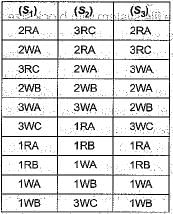Test: Transactions & Concurrency Control- 1 - Computer Science Engineering (CSE) MCQ
10 Questions MCQ Test - Test: Transactions & Concurrency Control- 1
The concept of locking can be used to solve the problem of
1. Lost update
2. Uncommitted dependency
3. Inconsistent data
4. Deadlock
1. Lost update
2. Uncommitted dependency
3. Inconsistent data
4. Deadlock
What are the potential problems when a DBMS executes multiple transactions concurrently?
1. The lost update problem
2. The dirty read problem
3. The unrepeatable read problem
4. The phantom problem
1. The lost update problem
2. The dirty read problem
3. The unrepeatable read problem
4. The phantom problem
| 1 Crore+ students have signed up on EduRev. Have you? Download the App |
Which of the following schemes are used for ensuring atomicity?
Assume transaction A holds a shared lock R. If transaction B also requests for a shared lock on R, it will,
Which of the following cannot be restarted?
Consider the following transaction schedule:

The labeled precedence graph will be
Amongst the ACID properties of a transaction, the ‘Durability' property requires that the changes made to the database by a successful transaction persist
Consider the following three schedules of transactions T1, T2 and T3. [Notation: In the following NYO represents the action Y(Y for read, W for write) performed by transaction Non object O.]

Which of the following statements is TRUE?
In case Of timestamp ordering R-timestamp (Q) denotes




















